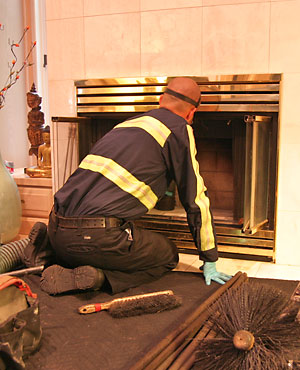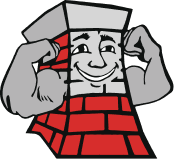Chimney Repairs: The Best Cure is Prevention
 Your chimney provides protection against fire hazards, and the firebox has the same function. With regular chimney inspections and proper maintenance, you are helping to prevent a dangerous fire and avoiding repairs much more expensive than the cost of preventative measures. Hiring a professional chimney technician gives you the benefits of training, experience, and the best tools for the job of inspecting a chimney. Professionals also provide your best defense against the dangers of operating a fireplace when the chimney needs repairs. If you are interested in a do-it-yourself chimney and fireplace inspection, the following gives you an idea of what you can look for.
Your chimney provides protection against fire hazards, and the firebox has the same function. With regular chimney inspections and proper maintenance, you are helping to prevent a dangerous fire and avoiding repairs much more expensive than the cost of preventative measures. Hiring a professional chimney technician gives you the benefits of training, experience, and the best tools for the job of inspecting a chimney. Professionals also provide your best defense against the dangers of operating a fireplace when the chimney needs repairs. If you are interested in a do-it-yourself chimney and fireplace inspection, the following gives you an idea of what you can look for.
Inspect the Firebox
If there are loose mortar joints or cracks in the masonry of your firebox, repair is needed. This is typically a small fix for chimney experts. Refractory cement can seal the breach, and that may be all that’s needed to fix the problem. A firebox rebuild may be needed, if damage is extensive.
Check the Damper
Your chimney damper should open and close with ease. Use a flashlight to check for excessive rust, pitting, or cracks. If you see any evidence of these types of problems, it may be time to have a new damper installed. Another damper issue is one that affects your monthly utility bill. If the damper does not seal adequately when closed, it’s like having an open window in your home year around. You can check the seal by placing a dollar bill between the damper doors as you close them. If you can easily tug the bill out anywhere along the damper doors, the seal is inadequate.
Birds-Eye View
One of the best reasons to contact professional chimney sweeps for inspections is to prevent the need to climb onto the roof yourself. If it’s safe for you to climb on your roof and inspect your chimney, the following are some things to look for, as evidence that repairs are needed:
•  Is the flashing in good condition? The metal component of the chimney is much more susceptible to the elements than brick and mortar. If even a small rust hole appears in the flashing or if the top of the flashing doesn’t adequately keep water out, your roof could suffer serious water damage, including structural damage.
Is the flashing in good condition? The metal component of the chimney is much more susceptible to the elements than brick and mortar. If even a small rust hole appears in the flashing or if the top of the flashing doesn’t adequately keep water out, your roof could suffer serious water damage, including structural damage.
• Inspect the brick and mortar joints of your chimney. If the mortar is deteriorating, it means that moisture can get in and cause damage to the masonry. Repair may also be needed if there are loose or cracked bricks. If the structure is leaning, a chimney rebuild is probably necessary.
• Inspect the chimney crown, which is the cement at the very top of the chimney. If it is cracked, repairs are needed, to prevent moisture from damaging your masonry and flue lining.
• Check to make sure the chimney cap is in good condition. If you don’t have one, get one installed, to keep moisture and critters out and to serve as a spark guard that protects against potential dangers caused by flying embers.
The Flue
You can use a flashlight to make a cursory inspection of part of the flue lining, but it is far better to hire a professional, who can use special equipment to make a detailed video inspection from top to bottom. If there is even the smallest crack in the flue, your home is exposed to an increased risk of a hazardous chimney fire or even an intense house fire.
The Chimney Safety Institute of America, one of the leading authorities on fire prevention, recommends an annual inspection, to ensure safety. When you catch problems early, you also prevent excessive and costly damage from occurring to your home.
Northeastern Chimney, Inc.
37 Cody Street, West Hartford, CT 06110
Phone: 860-233-5770


